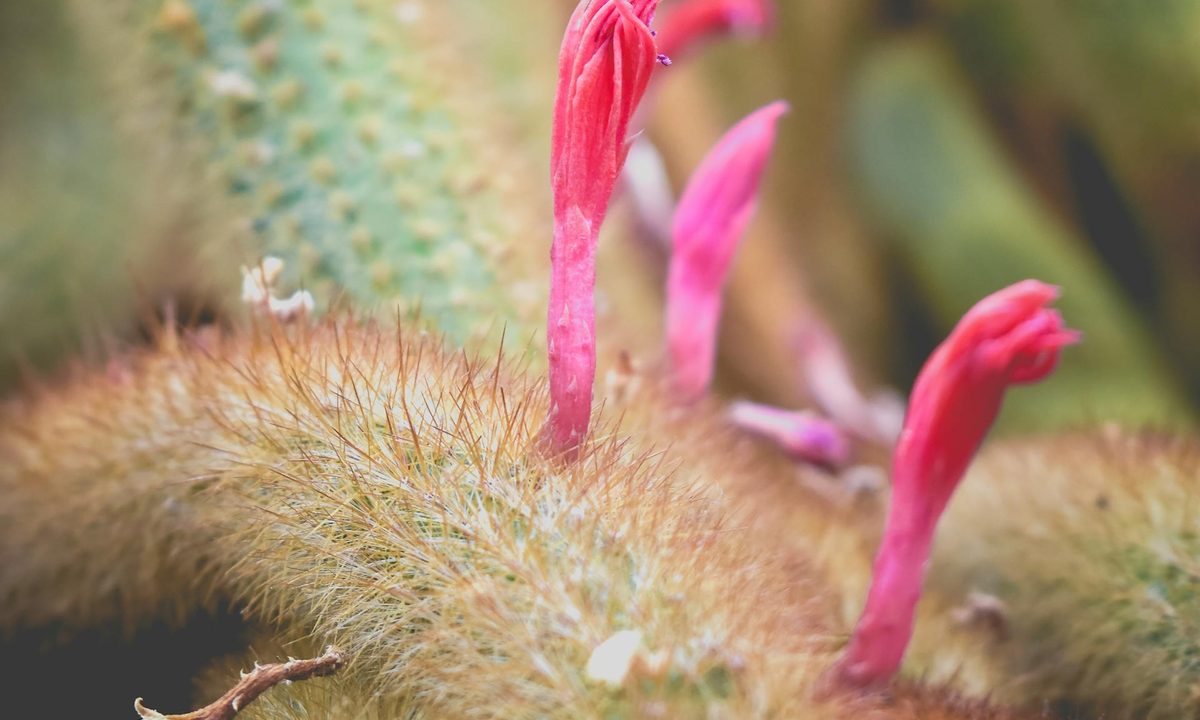Cacti can come across as prickly and uninviting, but some of them have flowers that rival the brightest blooms of more traditional flowers. If you live in a dry, hot climate that makes growing most plants difficult, but still want a colorful, lively garden, then cactus flowers are the way to go. Not only are cacti easy to grow outdoors if you live in a desert climate, but they can also grow indoors. Their flowers tend to be vibrant with unique shapes.
If you’re waiting for your cactus to bloom and asking yourself, “How often does a cactus flower bloom,” then this is the guide for you! We’ll answer all your questions so you can grow a garden full of bright cactus flowers.
What factors affect bloom time?
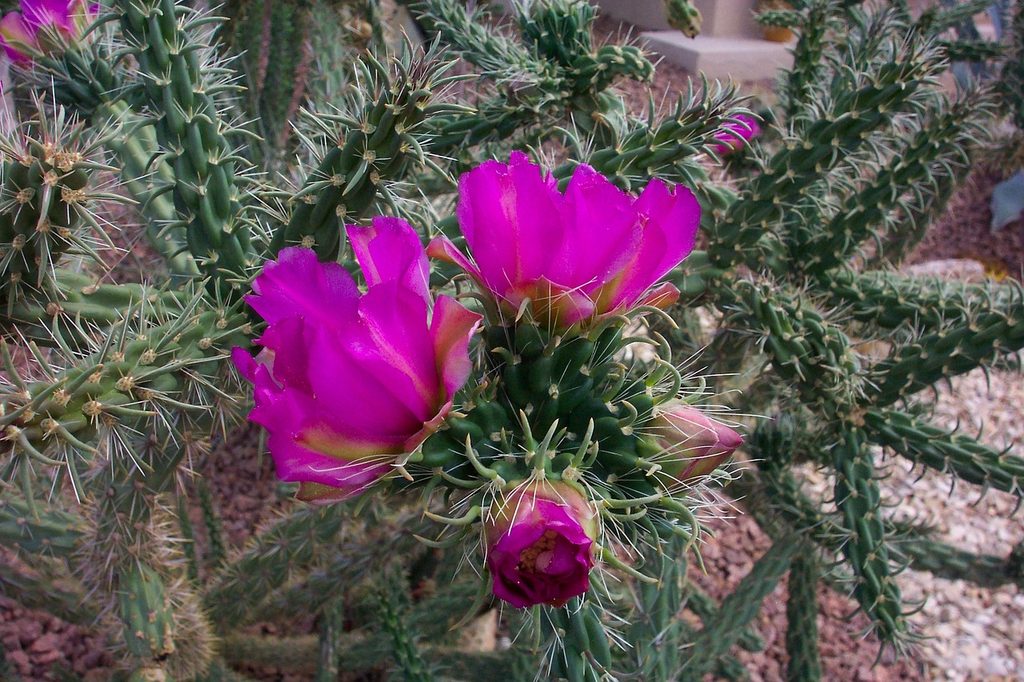
Species is one of the most important factors that can impact how often your cactus blooms and how long the bloom lasts. Cacti tend to bloom when they reach maturity, so slower-growing cacti typically take much longer to produce flowers than cacti that grow more quickly.
The other most important factor is whether all of your cacti’s needs are being met. A cactus that is getting the right amount of water, sun, and nutrition will bloom more regularly. On the other hand, a cactus that is getting enough light, water, and nutrition to stay alive, but not as much as it needs, won’t bloom as often. This is a way of conserving energy for the plant.
Knowing what type of cactus you have is essential for predicting bloom time. This is both because different cacti bloom at different rates and because different cacti have different needs. Although we like to think of cacti as plants that all need hot, dry, sunny conditions, there’s actually still quite a bit of variety when it comes to how much of each of those things individual cactus species need.
The best cacti to grow for flowers
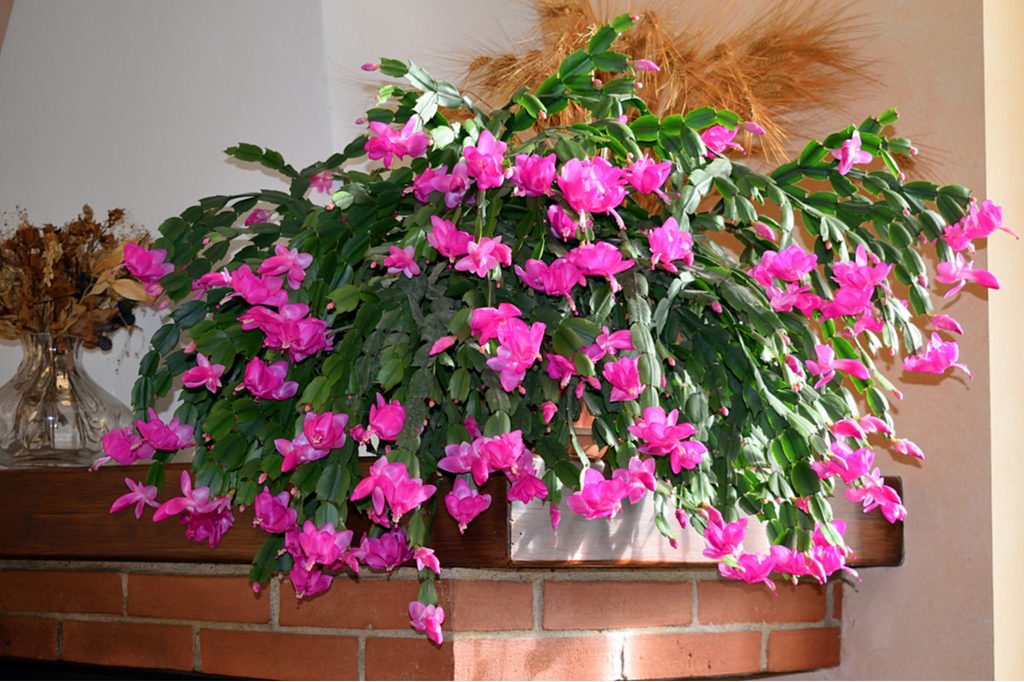
One of the best cacti to grow for flowers is the Christmas cactus, also known as the genus Schlumberga. They produce flowers in various shades of pink, depending on the specific variety you have, and bloom regularly. They tend to bloom when the weather gets colder, which is where the name Christmas cactus comes from. Additionally, they’re low maintenance and don’t grow spines, making them a safer alternative if you have children or pets. If you start from seed or from a seedling, it can take two to three years for a Christmas cactus to mature enough to bloom. Once they begin blooming, and with proper care, they bloom regularly every year.
For a more traditional-looking cactus, try something from the Mammillaria genus. Also called pincushion cacti, these small, rounded cacti begin to bloom in late spring and early summer. Their flowers come in many shades of pink, red, orange, and white. Although they stay fairly small, they can take over a year to mature and the flowers last only about a week. However, they bloom fairly regularly once they begin and the flowers are known for being vibrant.
What cacti take the longest to bloom?
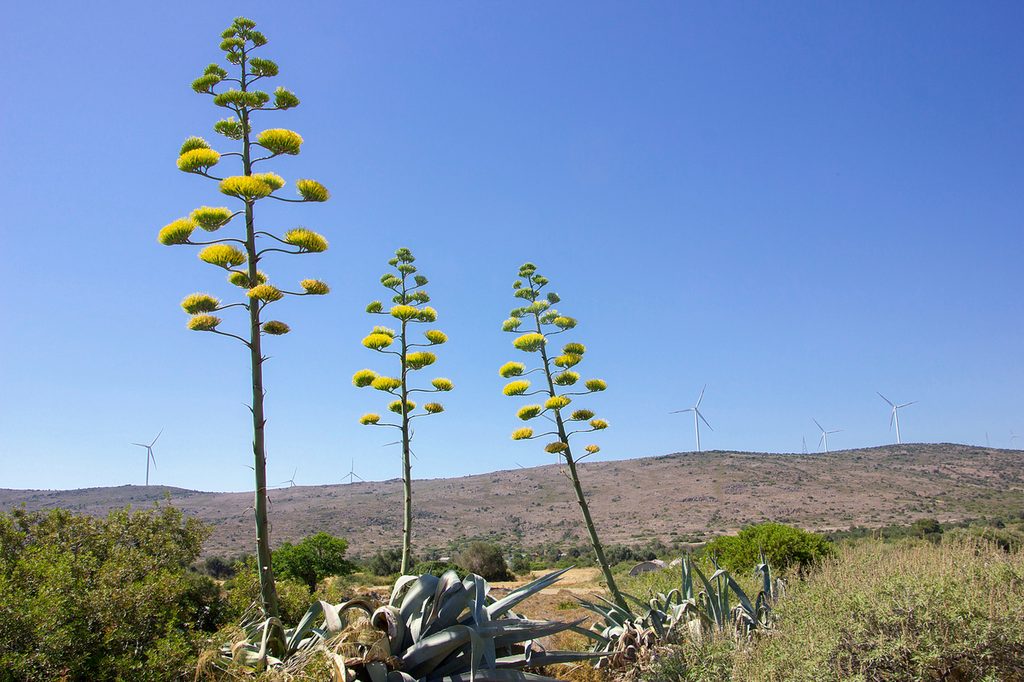
If you’re looking for cacti that bloom quickly and often, then you should probably avoid saguaros, agave americana, and agave ocahui. All three cacti take decades to mature enough to produce flowers. Both agave americana and agave ocahui take 20 to 30 years to bloom; once they do, though, their flowers are incredible. Like all agaves, they produce tall stalks on which the flowers bloom, but the stalks of these varieties tower over their surroundings. However, they only bloom once, as agave typically die after producing flowers due to the amount of energy they take to grow.
Saguaros take between 30 and 50 years to flower, and the blooms last for only a day. This makes the flowers a rare sight. The flowers are large, with white petals and a center filled with yellow pollen. Once the flowers have been pollinated, the cactus then produces red fruit, which, when ripe, split open. The split fruits often look like red flowers. The saguaro’s fruit is edible to humans, but, considering how tall saguaros can grow, it can be tricky to reach them.
How can you encourage your cactus to bloom?
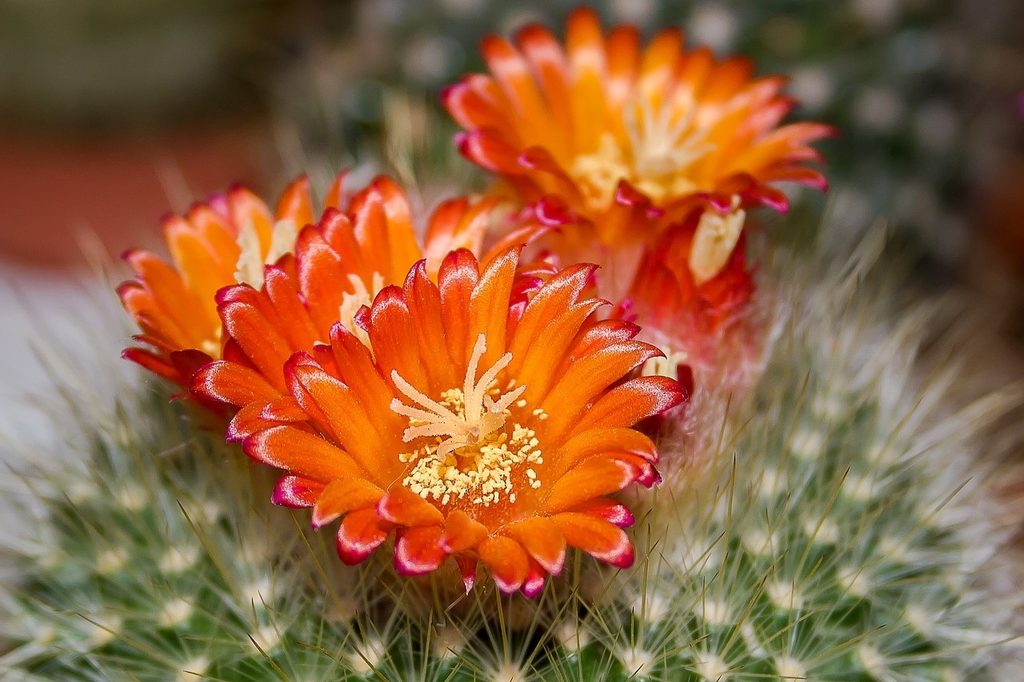
The best way to encourage your cactus to bloom is to take good care of it and be patient. If you’ve noticed that your cactus is at the age when cacti in its genus should be blooming but hasn’t started to flower yet, double-check that it’s getting everything it needs. For indoor cacti, the most common reason blooming is delayed is not enough sun. Try moving your cactus to a sunnier location, or consider investing in a grow light.
What to do after your cactus blooms
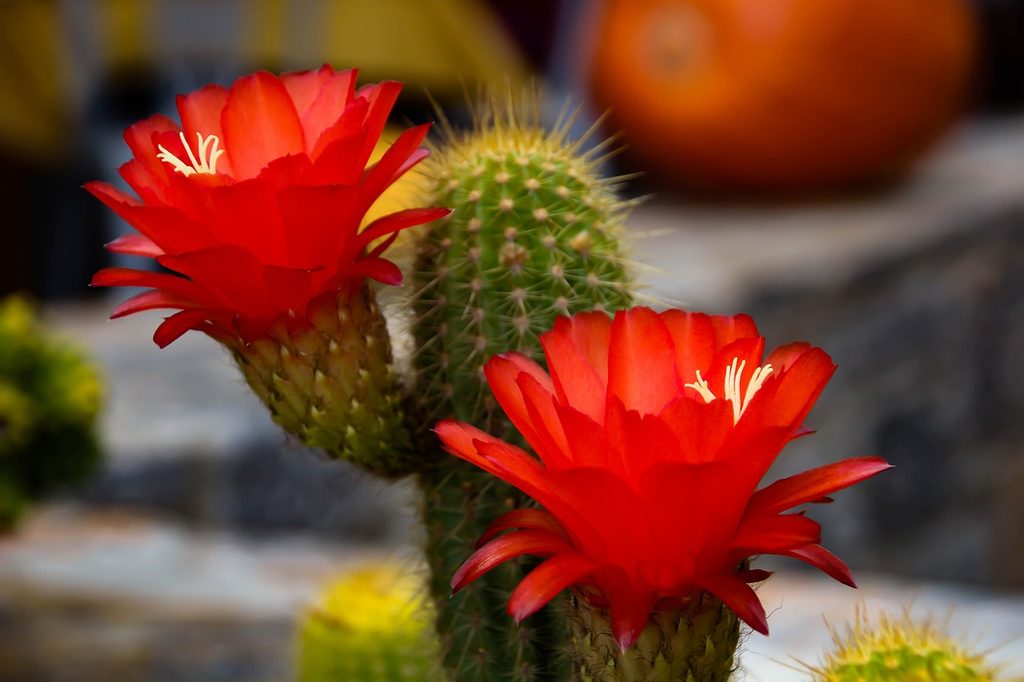
With most flowering perennial plants, gardeners know to deadhead them and watch for seed pods or fruit. Although cacti are also flowering perennials, they’re different enough to throw many gardeners off their rhythm. Not to worry, though, their care is very similar to other perennials. Spent flowers will fall off on their own, but you can deadhead your cactus if you prefer. However, cacti that are large or very spiky can be difficult to deadhead. Thick gloves are helpful, but many gardeners prefer to simply let the flowers fall off on their own.
Some cacti, such as the prickly pear cactus, will grow fruit if the flowers have been pollinated. Be careful while harvesting these fruits to avoid getting pricked! If you’re careful, though, then you can end up with a delicious treat after your cactus is done blooming.
Depending on the type of cactus you have, it may die after flowering. This is an unfortunate but unavoidable part of the cactus lifecycle that many cacti go through. However, some cacti will continue to live and may even bloom again! Knowing the type of cacti you have will help you prepare for what to expect. If you aren’t sure what kind of cactus you have, simply continue caring for it as usual and wait to see what happens.
Can you harvest seeds from cactus flowers?
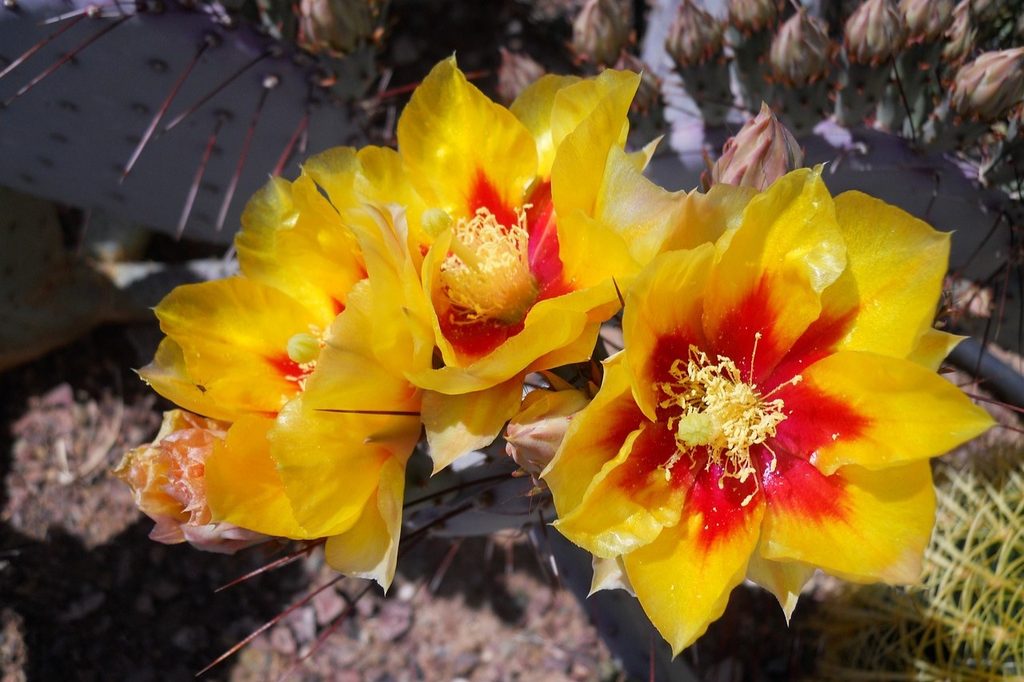
When other plants flower, they produce seeds that you can harvest, save, and replant. What about cacti? The good news is that cactus flowers will also produce seeds! Most cacti produce small fruits or seed pods, although some will produce seed heads. The ripe fruit, seed pods, or seed heads can be collected as long as you’re careful to avoid the spines. The seeds can then be stored in a cool, dry place until you’re ready to plant them.
However, cactus flowers need to be pollinated in order to produce seeds. If your cactus is outdoors, then you can rely on natural pollinators, such as bees, butterflies, birds, and even bats. Indoor cacti will need to be pollinated by hand, but don’t worry; this is easier than it sounds.
You can collect pollen from one flower with a cotton swap or paintbrush and place it into another flower to pollinate your cactus. While a few cacti are self-pollinating (meaning a flower can be pollinated using pollen from flowers on the same plant), most are not. That means you’ll need more than one of the same type of cactus to pollinate them.
How often does a cactus flower bloom? It depends on the cactus! Most cacti that are commonly kept as houseplants take between one and 10 years to bloom, but some can take up to 50 years before they start to flower. Some cacti, like most agaves, only bloom once in a lifetime, while others, such as Christmas cacti, bloom every year. This wide range of flowering times can be overwhelming, but it also means that there are plenty of options, so you can choose the cactus that works best for you.
